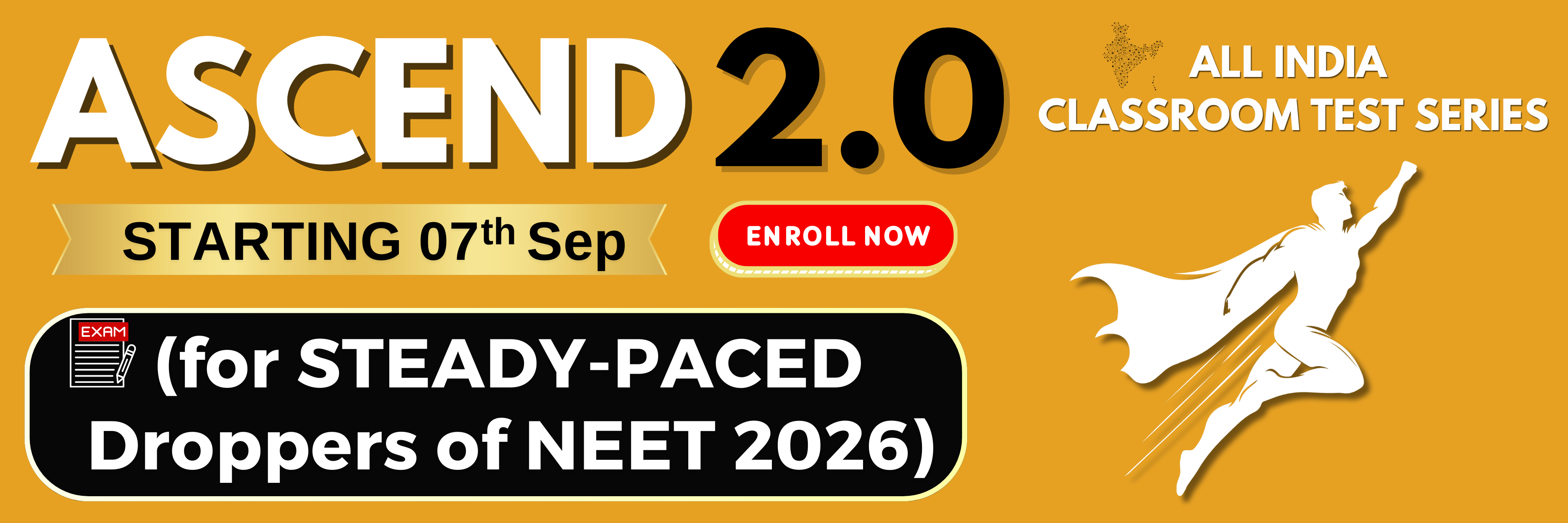Select Question Set:
What structure in molluscs forms the shell and houses the gills?
1. mantle
2. epidermis
3. gastrovascular cavity
4. odontophore
Subtopic: Phylum Mollusca |
94%
Level 1: 80%+
Please attempt this question first.
Hints
Please attempt this question first.
| Assertion(A): | Cnidarians and Echinoderms are diploblastic animals. |
| Reason(R): | Cnidarians and Echinoderms lack mesoderm. |
| 1. | Both (A) and (R) are True and (R) is the correct explanation of (A). |
| 2. | Both (A) and (R) are True but (R) is not the correct explanation of (A). |
| 3. | (A) is True but (R) is False. |
| 4. | (A) is False and (R) is False. |
Subtopic: Phylum Coelenterata | Phylum Echinodermata |
76%
Level 2: 60%+
Please attempt this question first.
Hints
Please attempt this question first.
| Assertion(A): | The physiology of tapeworms is highly simplified. |
| Reason(R): | The reproductive potential of tapeworms is very high. |
| 1. | Both (A) and (R) are True and (R) is the correct explanation of (A). |
| 2. | Both (A) and (R) are True but (R) is not the correct explanation of (A). |
| 3. | (A) is True but (R) is False. |
| 4. | (A) is False and (R) is True. |
Subtopic: Phylum Platyhelminthes |
62%
Level 2: 60%+
Please attempt this question first.
Hints
In Echinoderms:
| Statement I: | Digestive system is complete with mouth on the lower (ventral) side and anus on the upper (dorsal) side. |
| Statement II: | An excretory system is absent. |
| 1. | Statement I is correct; Statement II is incorrect |
| 2. | Statement I is correct; Statement II is correct |
| 3. | Statement I is incorrect; Statement II is incorrect |
| 4. | Statement I is incorrect; Statement II is correct |
Subtopic: Phylum Echinodermata |
82%
Level 1: 80%+
Please attempt this question first.
Hints
Please attempt this question first.
Regarding Osteichthyes:
| Statement I: | They have four pairs of gills which are covered by an operculum on each side. |
| Statement II: | Air bladder is absent. |
| 1. | Statement I is correct; Statement II is incorrect |
| 2. | Statement I is correct; Statement II is correct |
| 3. | Statement I is incorrect; Statement II is incorrect |
| 4. | Statement I is incorrect; Statement II is correct |
Subtopic: Comparative study of Cartilagenous & Bony Fishes | Class Osteichthyes |
81%
Level 1: 80%+
Please attempt this question first.
Hints
Please attempt this question first.
Which collared flagellated cells are characteristically found in sponges?
1. Choanocytes
2. Interstitial cells
3. Gastrodermal cells
4. Nematocytes
1. Choanocytes
2. Interstitial cells
3. Gastrodermal cells
4. Nematocytes
Subtopic: Phylum Porifera |
95%
Level 1: 80%+
Please attempt this question first.
Hints
Please attempt this question first.
A non-glandular skin will be seen in both:
| 1. | Snake and Frog | 2. | Chameleon and Turtle |
| 3. | Frog and Pigeon | 4. | Crocodile and Tiger |
Subtopic: Study of Reptilia |
65%
Level 2: 60%+
Please attempt this question first.
Hints
Identify the incorrect statement:
| 1. | Mesoglea is present in between ectoderm and endoderm in Obelia. |
| 2. | Asterias exhibits radial symmetry as an adult |
| 3. | Fasciola is a pseudocoelomate animal |
| 4. | Taenia is a triploblastic animal |
Subtopic: Phylum Ctenophora | Phylum Platyhelminthes |
74%
Level 2: 60%+
Please attempt this question first.
Hints
Please attempt this question first.
Identify the incorrect statement:
| 1. | In cockroaches and prawns, excretion of waste material occurs through malpighian tubules. |
| 2. | In ctenophores, locomotion is mediated by comb plates. |
| 3. | In Fasciola, flame cells help in excretion |
| 4. | Earthworms are hermaphrodites and yet, cross-fertilization takes place among them. |
Subtopic: Phylum Ctenophora | Phylum Arthropoda |
58%
Level 3: 35%-60%
Please attempt this question first.
Hints
Please attempt this question first.
How many of the given statements are correct regarding cyclostomes?
1. 1
2. 2
3. 3
4. 4
| I: | All living members of the class Cyclostomata are ectoparasites on some fishes. |
| II: | Cyclostomes have a sucking and circular mouth without jaws. |
| III: | Circulation is of open type. |
| IV: | Their body is devoid of scales and paired fins. |
2. 2
3. 3
4. 4
Subtopic: General Introduction: Vertebrates & Agnatha | Class Cyclostomata |
65%
Level 2: 60%+
Please attempt this question first.
Hints
Please attempt this question first.
Select Question Set:






